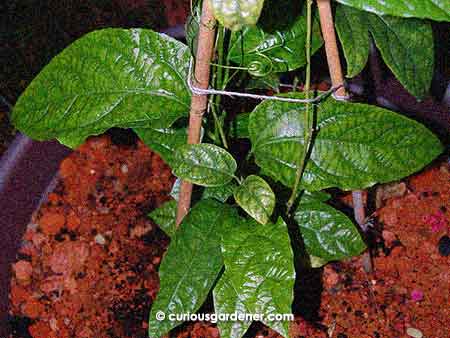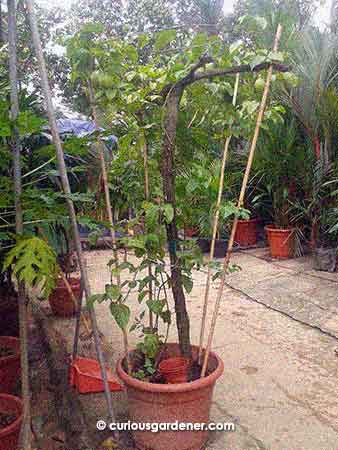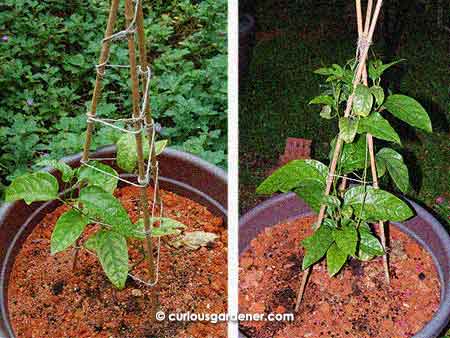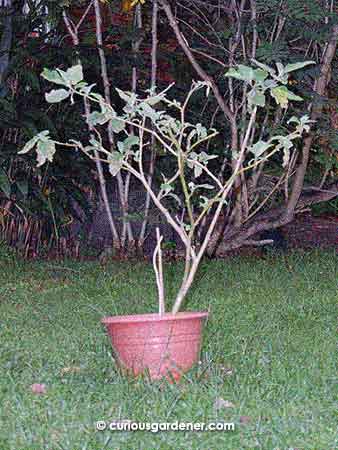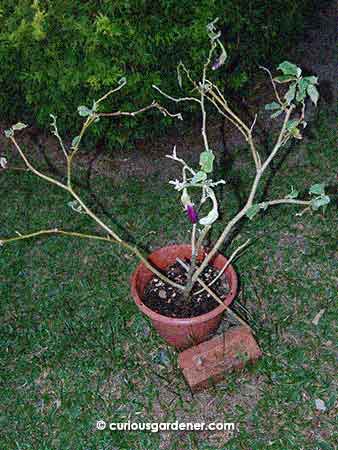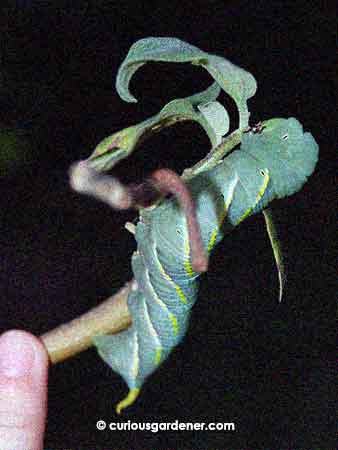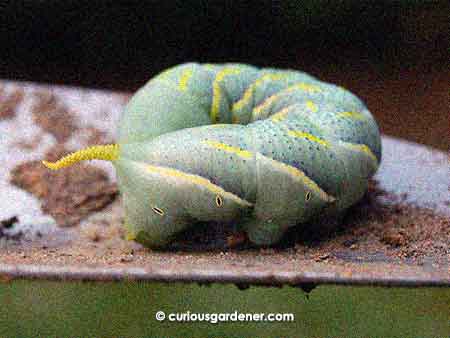
The guava fruit growing on the tree. It still has a ways to grow before we can harvest it.
My mum has been telling me for quite some time that there is a guava plant growing along our back fence. All kinds of plants tend to take root in that odd space where there’s the chain link fence on our side and a solid surface on the neighbour’s side – usually palm trees, ferns and other weeds. When I looked at what my mum was talking about, all I saw was a tall, skinny plant with sparse leaves. It wasn’t impressive at all, and I forgot about it.
Then last week my mum excitedly told me there were fruits growing on the tree.
In my mind, when she said “tree”, I would visualize the word in quotation marks, because it did not resemble a tree to me; I’d call it a plant, because it was still skinny and unimpressive.
However, I dutifully went to look at the plant, which was now over two metres tall, and even through it didn’t have a mighty trunk like a mango tree, it did indeed have two fruits growing on it, on different branches.
It also appeared to be attracting white flies – the undersides of the leaves had several of those spirals of white – as did one of the fruits. Since this is now a productive plant, I’m going to have to take it under my wing and take pest control measures.
It has been many years since we had a guava tree growing in the garden. I now wish I had paid more attention when my dad was pottering around with the different fruit trees he used to grow, because I can’t remember anything about the guava tree apart from plucking the fruits and vying with my siblings for the Y-shaped branches.
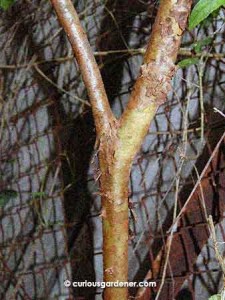
The wood of the guava tree is strong and smooth.
That’s one thing I do remember about guava trees – the wood is tough and smooth, and they tend to grow the best Y-shaped branches, making it the perfect plant to use to make hand catapults, or slingshots. In those days, we made our own toys…
The fruits weren’t my favourite to pluck and eat direct from the tree. All those tiny, hard seeds in the centre used to put me off because they could get stuck, painfully, between your teeth when you bit right into the fruit.
Maybe that’s where the fruit got its name of “jambu batu” – “batu” meaning “rock” or “stone” in Malay. As far as I know, “jambu” refers to the syzygium genus of fruits, but guavas aren’t of this family – they’re related to pomegranates. Something must have been lost in the translation somewhere…
Admittedly, the soft pith that the seeds are embedded in is temptation enough to want to bite into that seed-laden area. But, it’s probably the plant’s way of getting birds to get in there and help to disperse its seeds. How else would this plant have started growing where it did, if not for birds?
So, even if this isn’t my favourite fruit to eat, a productive plant is always welcome in our garden – especially one that comes with so many health benefits. Guavas are high in dietary fibre and have about four times the Vitamin C than oranges! They are also rich in Vitamin A, folic acid, potassium, copper and manganese, and are relatively high in anitoxidants. Personally, I’m quite fond of the dried guava snacks, but of course nothing beats fresh fruits. I’ll just say, welcome guavas! 
© 2012 curiousgardener.com All rights reserved.

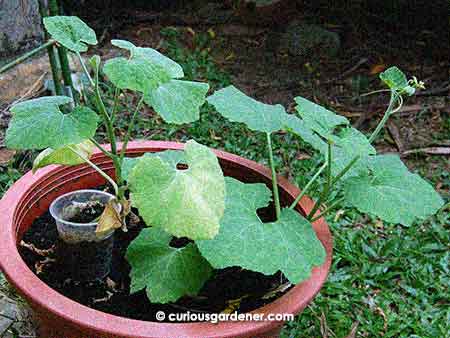
![]()


